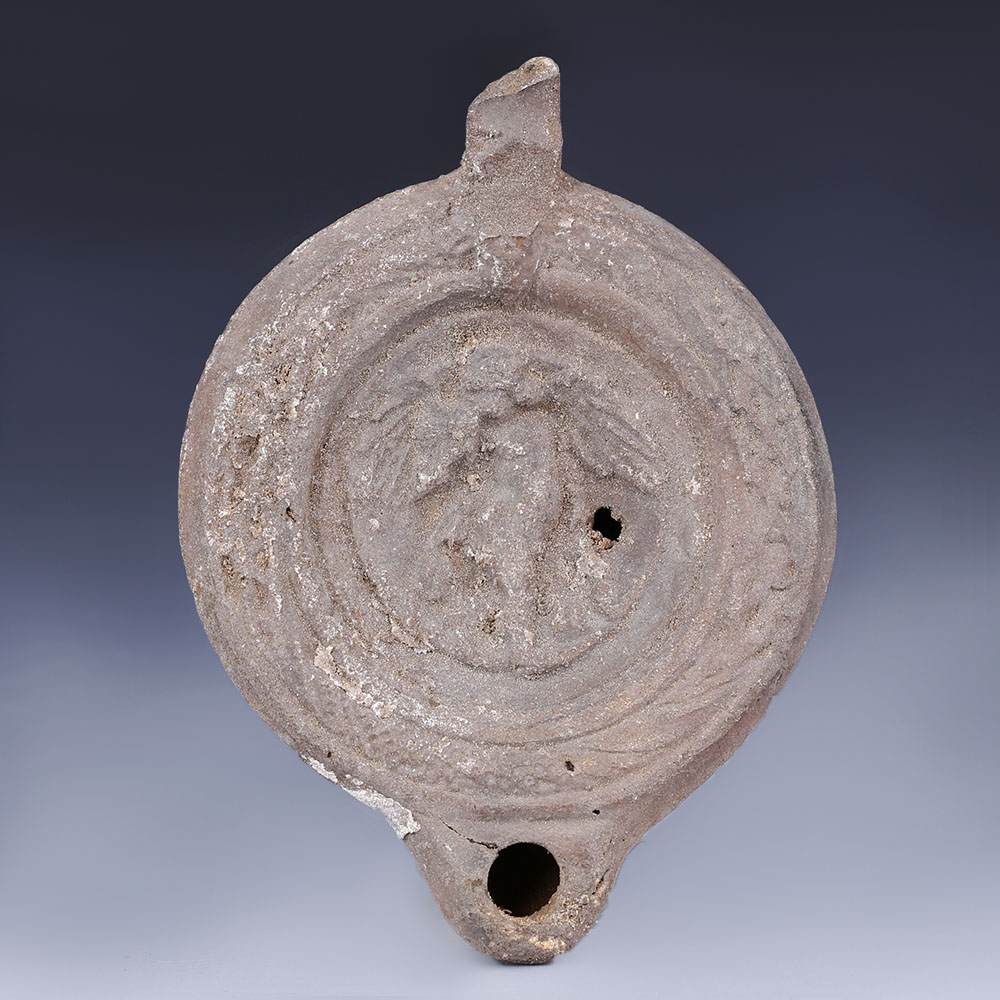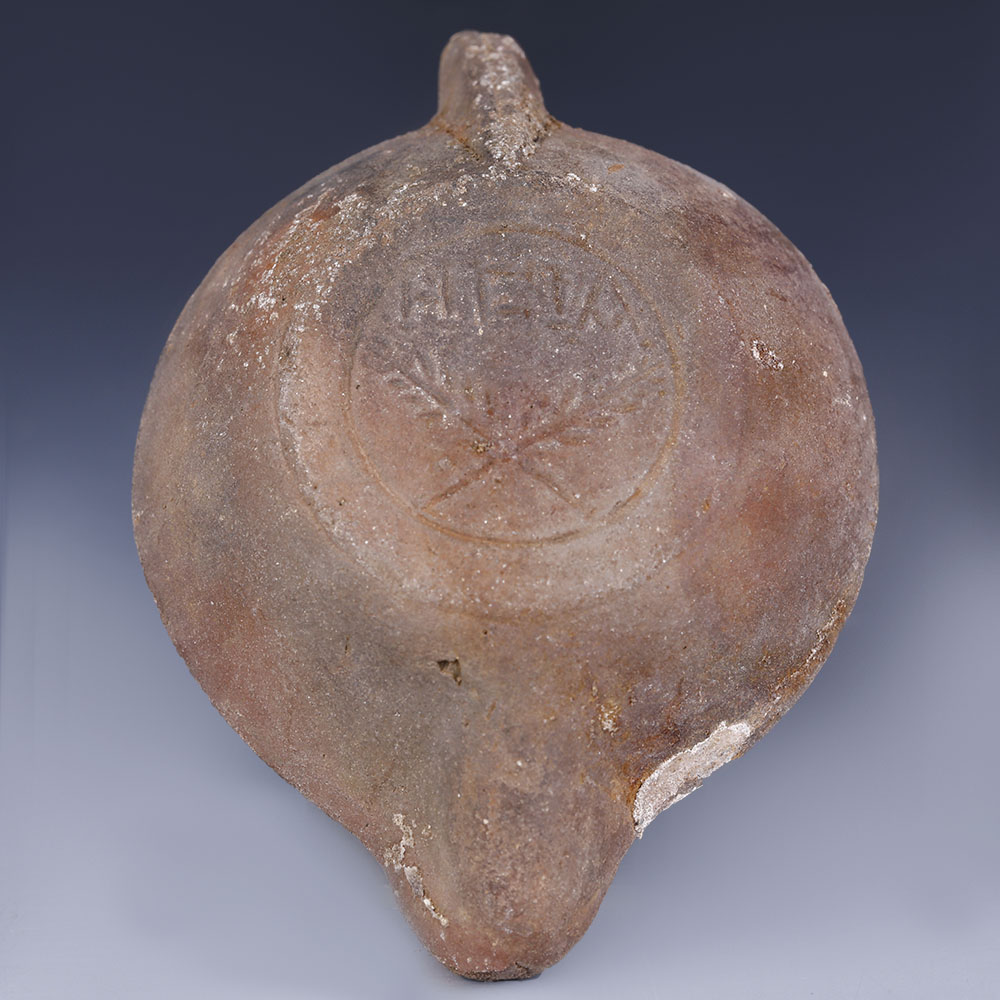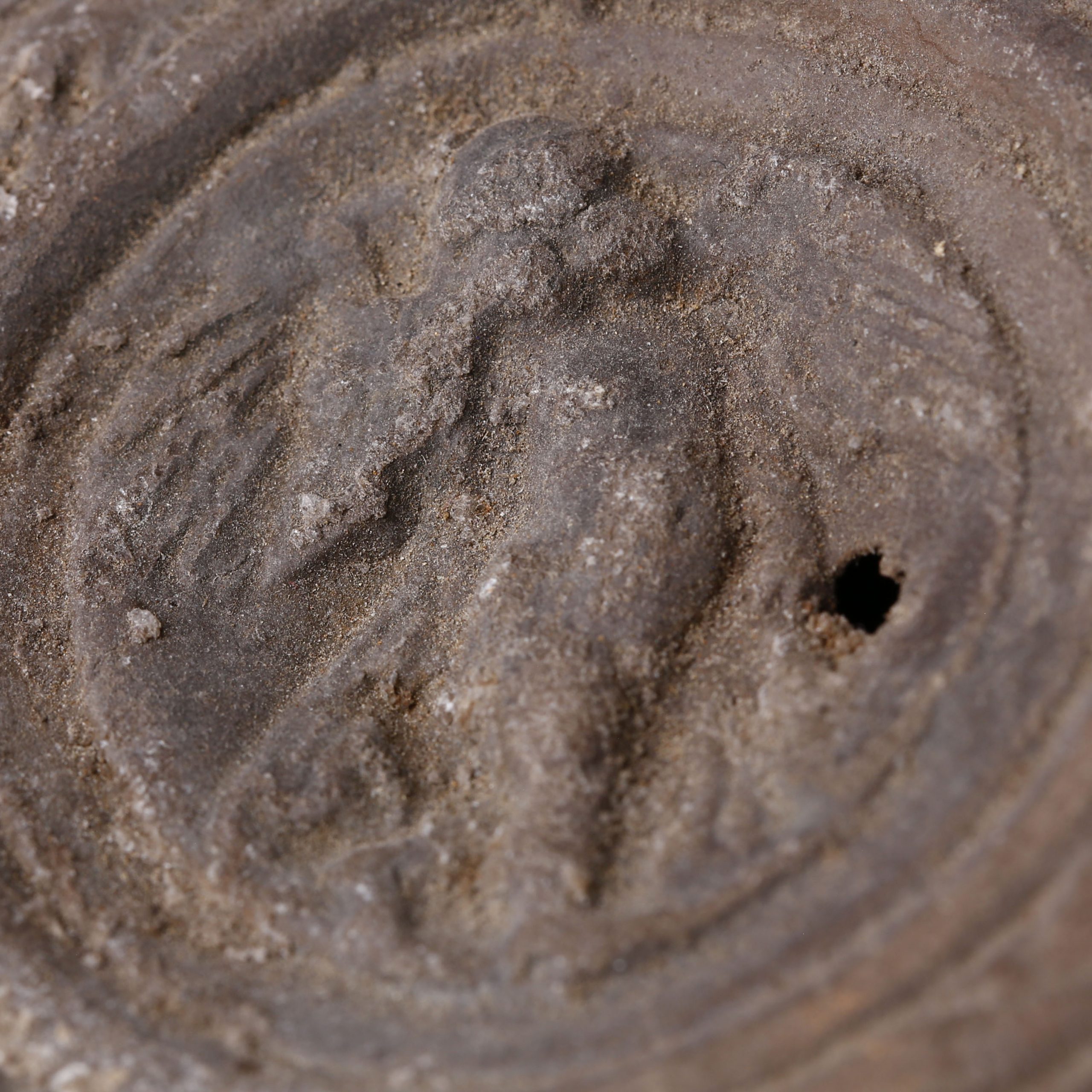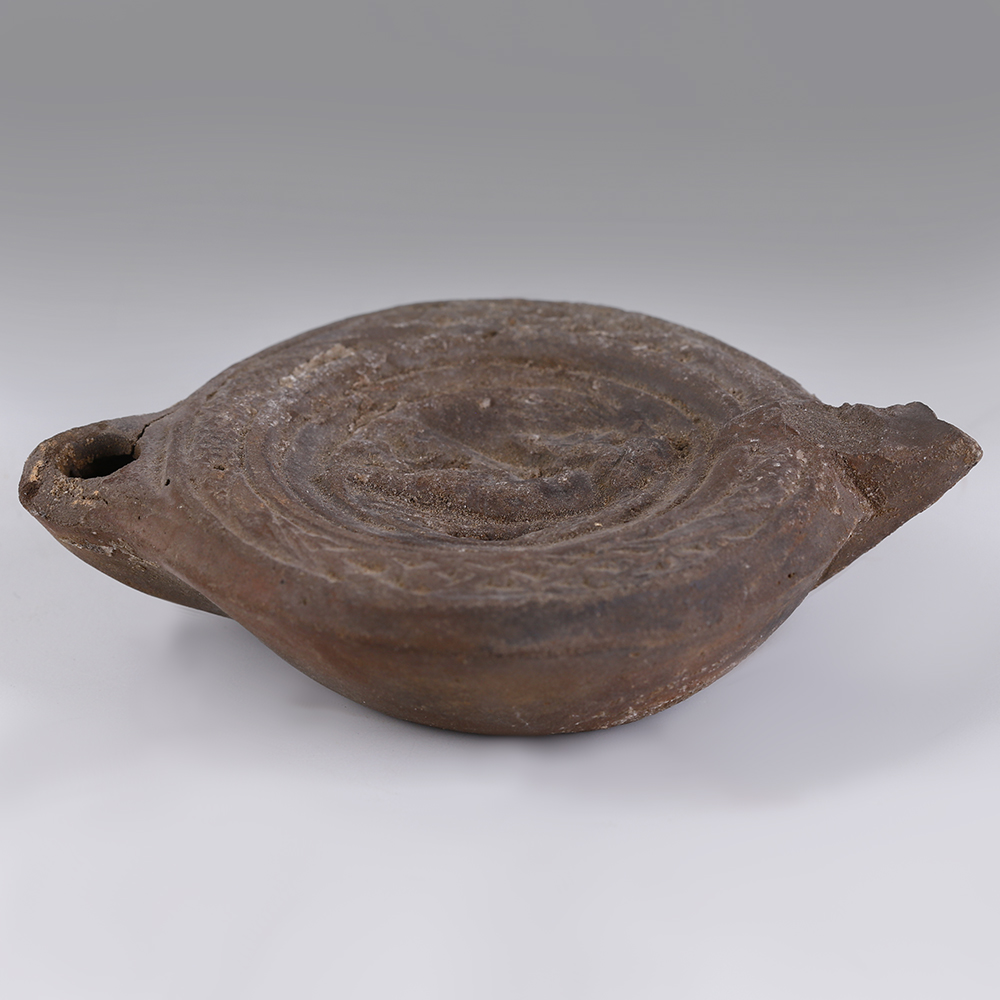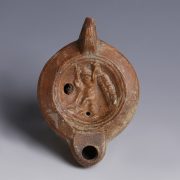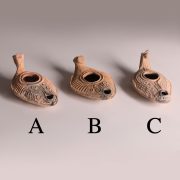In Antiquity, a lamp was originally called lychnus, from the Greek λυχνος, with the oldest Roman lamps dating back to the third century BC. It is thought that the Romans took the idea for lamps from the Greek colonies of Southern Italy. During the Roman Empire, it became commonplace to use lamps in funeral ceremonies and for public purposes. Over time, the manufacture of lamps increased, and so did the variation in decoration, which depended mainly on the shape and size of the lamp. Common decorative themes depicted on the discus were entertainment scenes, such as gladiators in combat, popular myths, and animals. This fine lamp displays the representation of the goddess Victoria: according to Ancient Roman mythology and religion, the goddess Victoria, whose counterpart is Nike in Ancient Greek mythology, was the personified goddess of victory. The high number of artistic and architectural dedications to her bear witness to the popularity of the goddess’ cult: Victoria widely appears on Roman coins, jewellery, architecture, and other works of art.
Roman Oil Lamp with Goddess Victoria
$217.99
A fine Ancient Roman terracotta oil lamp, featuring a short rounded nozzle, a concave discus with one filling hole, and a single applied, pierced handle, now partially damaged. The discus appears decorated with a moulded depiction of the winged Roman goddess of victory, Victoria. The image is bordered with engraved concentric circles, while the shoulders feature stylised laurel branches. The pose of the figure echoes depictions of the goddess portrayed holding round shields inscribed with New Year’s wishes. The reverse features engraved letters forming the maker’s name, HENA, with crossed palm branches. This lamp is classified as Loeschcke VIII; Bussière form D X 1.
Provenance: From the property of a deceased London, UK, gentleman; his collection formed 1970-1999.
Condition: Fine condition, part of the applied handle now missing
SOLD
| Weight | 56.2 g |
|---|---|
| Dimensions | L 10 x W 7.2 x H 2.4 cm |
| Culture | |
| Pottery and Porcelain | |
| Region | |
| Roman Mythology |
